RWW Makes Twitter Suggested User List and Grows Team
Troubles in my personal life impact the ReadWriteWeb business in the first half of 2009, but traffic continues to grow. We also add several new writers and operations people to our team.
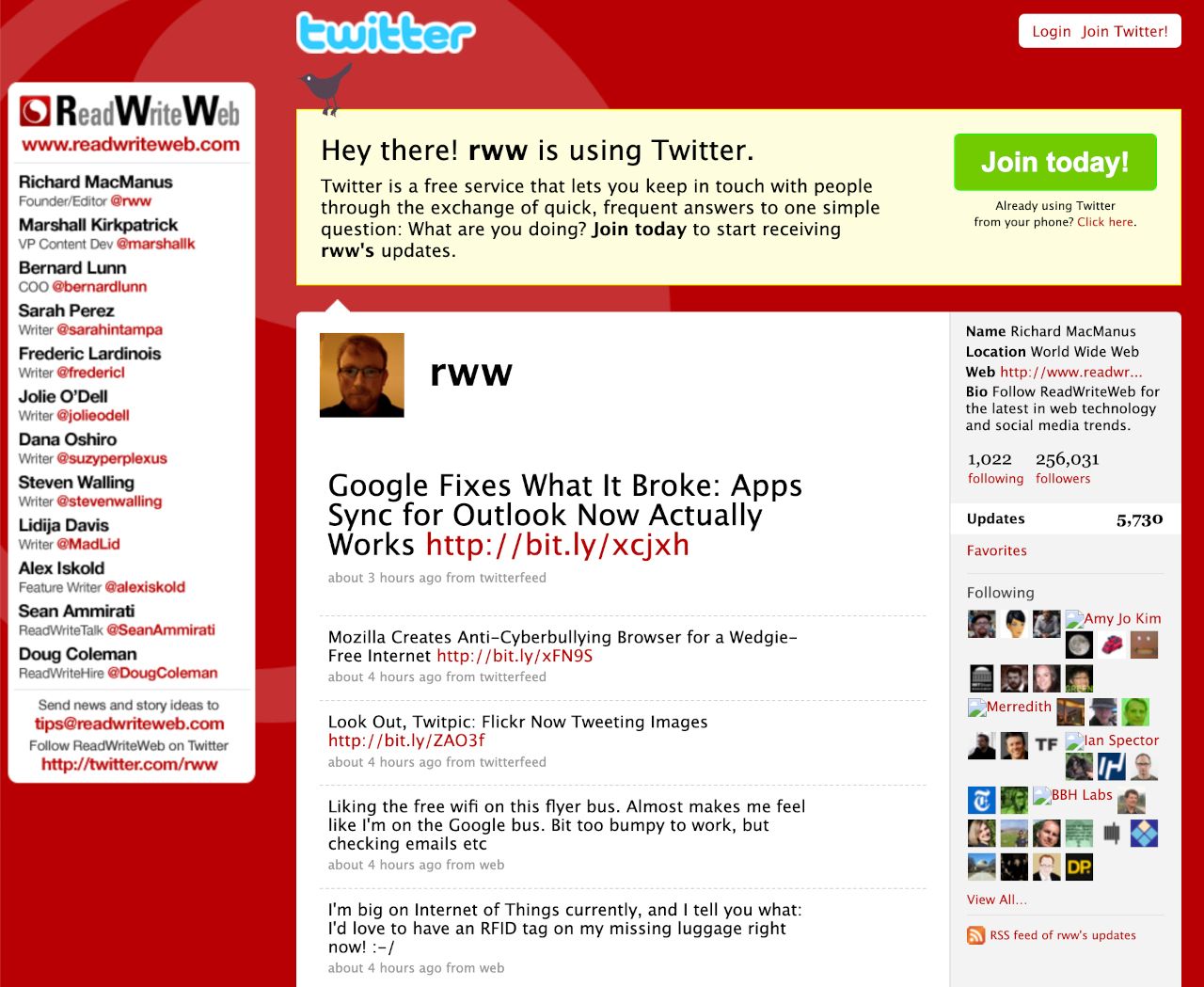
After I returned from my latest Silicon Valley trip in March 2009, my wife and I separated. Unlike our separation at the end of 2006, this was permanent. I drove eight hours or so to Auckland, where my aunt Mary kindly agreed to let me stay while I sorted my life out.
Personal turmoil over the next several months affected my ability to run my business. One of the missteps we made with the channel strategy during this time is directly attributed to me having other things on my mind. In early April we hired a senior IT journalist to become our VP enterprise content and programs. The idea was that this person would assume responsibility for the ReadWriteEnterprise channel (still unsponsored). I’d been hesitant about hiring another VP-level person. This would be the third full-time hire, after Marshall and Bernard, and I wasn’t sure it was necessary. Quite apart from the extra cost to the business at a time when we were not profitable, I thought the primary need for the ReadWriteEnterprise channel was someone to write daily posts for it. I questioned whether this person would be willing to do that with a VP title to their name. Despite my misgivings, we went ahead and filled the role. But I made it a clear requirement in the contract that we expected two to three posts per day.
After the first week, our new hire had written five posts. At this point I should’ve been more patient—it takes time to get settled into a new position, get used to the content management system and editorial processes, and so on. But I was already in a frazzled state of mind due to the difficulties in my personal life. So instead of waiting for a bit, I wrote an email on Friday reiterating my expectations for at least two posts per day. I added that “This isn’t optional, it’s a requirement of this job.”
Our new VP resigned over the weekend. It was, in the end, an amicable parting of ways. But I was annoyed with myself for hiring another VP when my intuition had told me it was the wrong decision. What RWEnterprise needed was a blogger who would knuckle down with the daily writing.
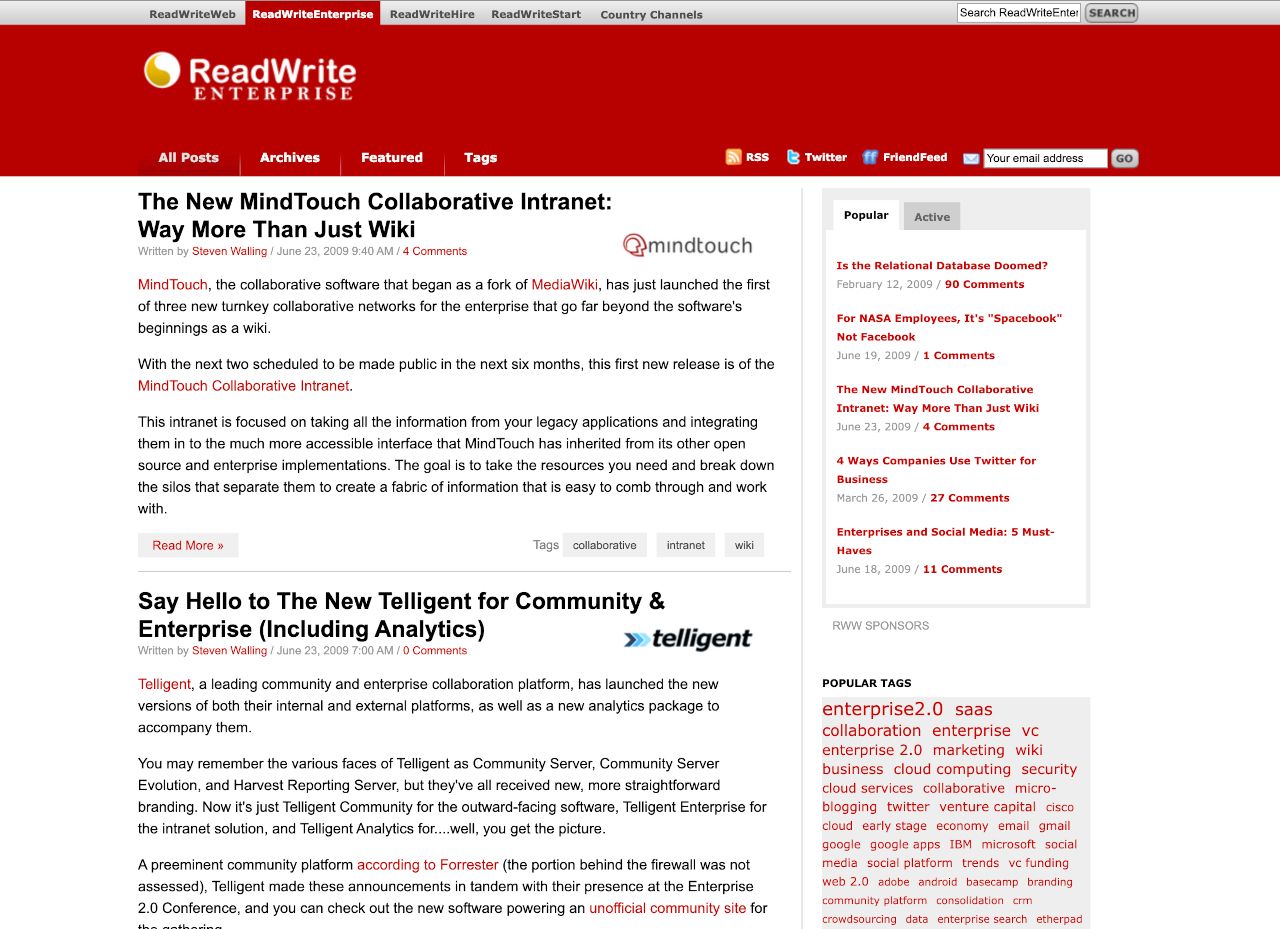
These mistakes were the least of my worries at this time, but I knew it was yet another reason I needed a home base again. Later in April, I went down to Wellington to visit my daughter and find a rental property. Fortunately, I quickly found a little semi-detached two-bedroom house in the suburb of Petone, Lower Hutt. It was about a ten-minute drive to see my daughter, and I could set up one of the rooms as a home office. The place was a bit run-down, and I had hardly any furniture to put in it, but I was pleased to find an affordable home to start the process of getting my life back together.
I moved into the rental in early May. I had a lot to organize with the move, in addition to dealing with lawyers and my angry wife about the separation. But it was also time for me to get down to business.
On Monday, May 11, the first week in my new abode, I wrote an email to Bernard and Marshall. “I was looking at RWW finances tonight and I’m afraid it’s not overly positive. So far this year we’ve made a trading loss every month.” I asked for updates on the premium report Marshall was working on, the loss-making ReadWriteHire job board, and ReadWriteEnterprise (which I labeled “a continuing problem”). I said I would be looking at potential writers for Enterprise that week, “but they will need to be at the low end of the writer pay scale.”
There were a lot of problems to solve—both personal and business—but at least I was at my desk in front of my iMac computer once more, albeit in a smaller home office and one I didn’t own.
Challenges: Revenue and Ops
We released our first premium report in May, on the topic of online community management. This had been Marshall’s baby, and he’d worked hard on it for four months. It was a hefty report, at seventy-five pages, and included case studies and analysis of how to run online communities in the Web 2.0 era. It had advice on blogging, RSS readers, Facebook, Twitter, and more. In addition, Marshall had set up “a companion online aggregator that delivers the most-discussed articles each day written by experts on community management from around the web.” It was impressive work from Marshall, even if it did take longer to produce than we’d have liked.
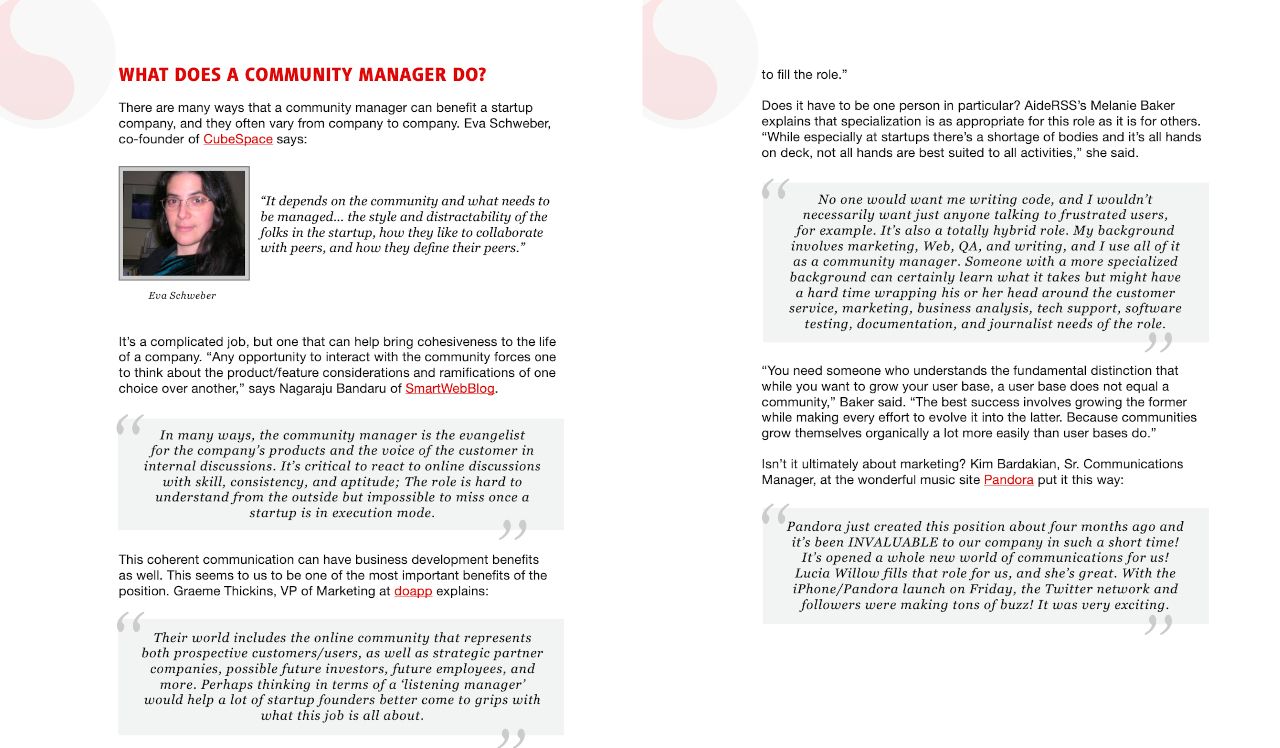
We were selling the report for $299 and hoped it would generate revenue quickly; the first four months of the year had been disappointing from an advertising revenue perspective. We were holding steady with our own sponsor revenue—the sidebar square ads sold out every month—but we were very concerned at FM Publishing’s performance. Both March and April numbers from FM came in lower than expected. We did have a $60,000 advance from FM to build up the enterprise channel while we continued to search for a sponsor, but we’d have to pay that back eventually. I told Bernard, “We simply can’t go on like this, we’re going to have to cut costs if this keeps up.”
We’d also gotten word from FM that TechCrunch was dropping them and going on their own with ad sales. GigaOm had already announced they were leaving FM last November. So RWW was now one of FM’s premier tech blogs, along with Mashable and VentureBeat. We hoped this would help our cause, since there would theoretically be more advertising units for us now. But it was also a sign that FM’s business model was perhaps shakier than they were letting on.
On the technical front, we had some big decisions to make. At the end of May I wrote an email to the leadership team and our tech crew—Mark Carey (a Movable Type expert) and Jared Smith (our webmaster, who had joined RWW a couple of months prior). Mark and Jared were part-time workers, but they were both solid and knowledgeable. We’d cycled through a couple of webmasters before Jared, but he had proven himself much more reliable than his predecessors; later in the year, we hired him full-time.

Under consideration were changing web hosts and a shift from Movable Type to WordPress. Both would be huge moves, but changing the content management system would be an especially heavy lift. Movable Type was becoming increasingly unstable as a content management system (CMS)—the continual run of bugs and server problems it caused were driving me nuts—and WordPress was now the default choice for professional blogs. Most, if not all, of our direct competitors used WordPress, so RWW was an outlier in this respect.
Regardless of the revenue and technical problems, RWW continued to grow in traffic and popularity. We’d gotten 2.58 million page views in May, and our average time on site had increased as well. This was partly a reflection of the growing prominence of Web 2.0 technologies in mainstream culture—perhaps typified by Twitter CEO Evan Williams’s appearance on the Oprah Winfrey Show in April. That same month saw a race between Ashton Kutcher and CNN to become the first Twitter account to reach a million followers (Kutcher won).
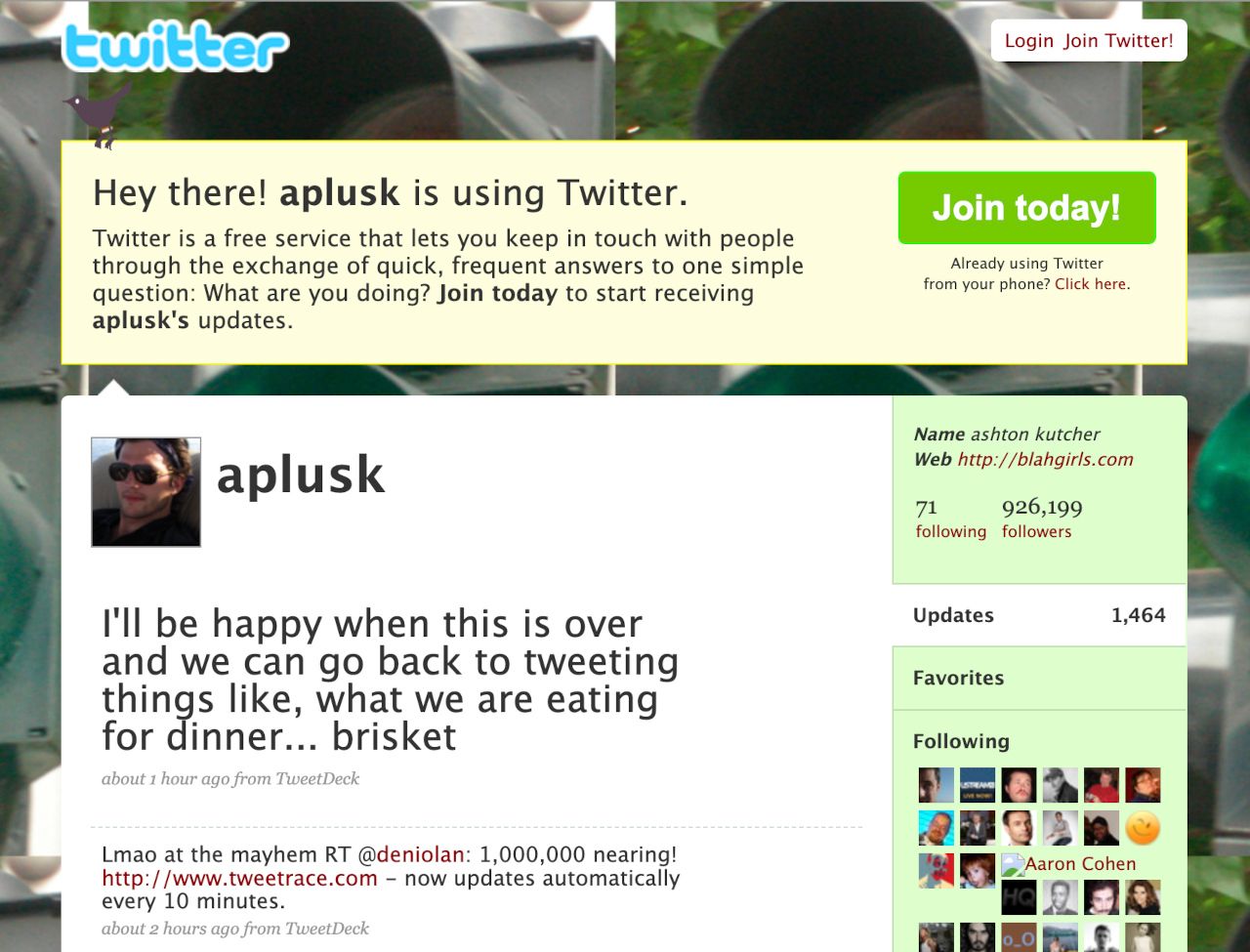
Team RWW Further Expands
As our traffic grew, so did our writing team. Jolie O’Dell, a smart young woman who dyed her hair bright red and had a personality to match, joined us at the end of April—our first writer based in Silicon Valley. (She described herself as “bicoastal,” but when I approached her she was based in Palo Alto.) I’d seen on Twitter and on her blog that she was a talented writer and passionate about social media. She was also keen to do some video for us, and I told her we were open to it, “for example at conferences, and interviews with startups.”
We further shored up our Silicon Valley base with the hire of Dana Oshiro, a Canadian now living in San Francisco. She’d had some tech-blogging experience with Mashable and Bub.blicio.us, and did marketing work in the tech industry, too. She was active with all the requisite social media tools and seemed a good fit for our ReadWriteStart channel, so she joined us at the start of June.
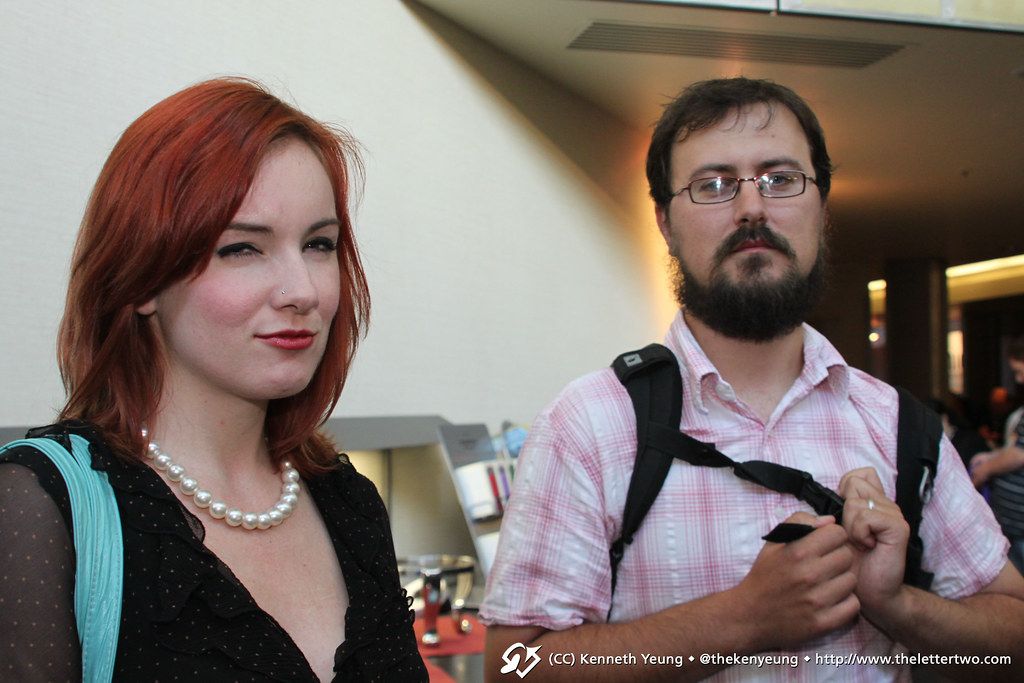
Starting at the same time as Dana was Steven Walling, who was younger than Jolie and Dana and hailed from Portland. He seemed to fit my description of what I’d wanted for ReadWriteEnterprise from the beginning: young, enthusiastic, and willing to write multiple posts per day. However, he didn’t have any tech-blogging experience, and I wondered if he was perhaps too young (in his early twenties, I guessed). But in the end his enthusiasm won me over, especially after he expressed an interest in the enterprise space. “For some time now I’ve been keeping up with the Enterprise 2.0 scene,” he told me, “and currently have about 100+ feeds I read directly related to the field.”
So by the middle of the year, we had an excellent roster of daily bloggers (Sarah, Frederic, Jolie on the main site, in addition to me, Marshall, Bernard and our various other contributors), Dana on ReadWriteStart, and Steven on ReadWriteEnterprise. It took the pressure off me to write every day and gave me an opportunity to write more on topics that were a little removed from the daily tech-news cycle—like IoT.
Twitter and the SUL
Something curious had also happened with our Twitter account, @rww, during this time. Technically it was still my personal account, but increasingly I was using it to promote RWW articles. On or about May 20, @rww was added to Twitter’s “suggested user list” (which everyone abbreviated to SUL). This meant that when a new user joined Twitter and expressed an interest in technology, RWW was now among the suggested users to follow. Just ten or so days on the SUL had resulted in a surge in traffic, making Twitter now a clear second in social referrers behind the still-popular tech news aggregator Digg.
Marshall and I discussed the merits (or otherwise) of being on the Twitter SUL. He had misgivings about it, quoting a prominent blogger who had suggested that those on the SUL were “afraid to speak truth to power.” Marshall noted that we’d been “unafraid to criticize Twitter” so far, but it was now an ethical issue how we covered the company, since we were on its SUL. He suggested we add a disclosure to posts we did about Twitter.
I thought the “truth to power” claim was nonsense and that it was common knowledge the top blogs were on the SUL. I told Marshall that, in fact, we had some catching up to do with our competitors. “RWW was last to get on there by a long way,” I said, pointing to TechCrunch’s 654,000 followers and Mashable’s 742,000. At this stage, early June, RWW had 79,000 followers.
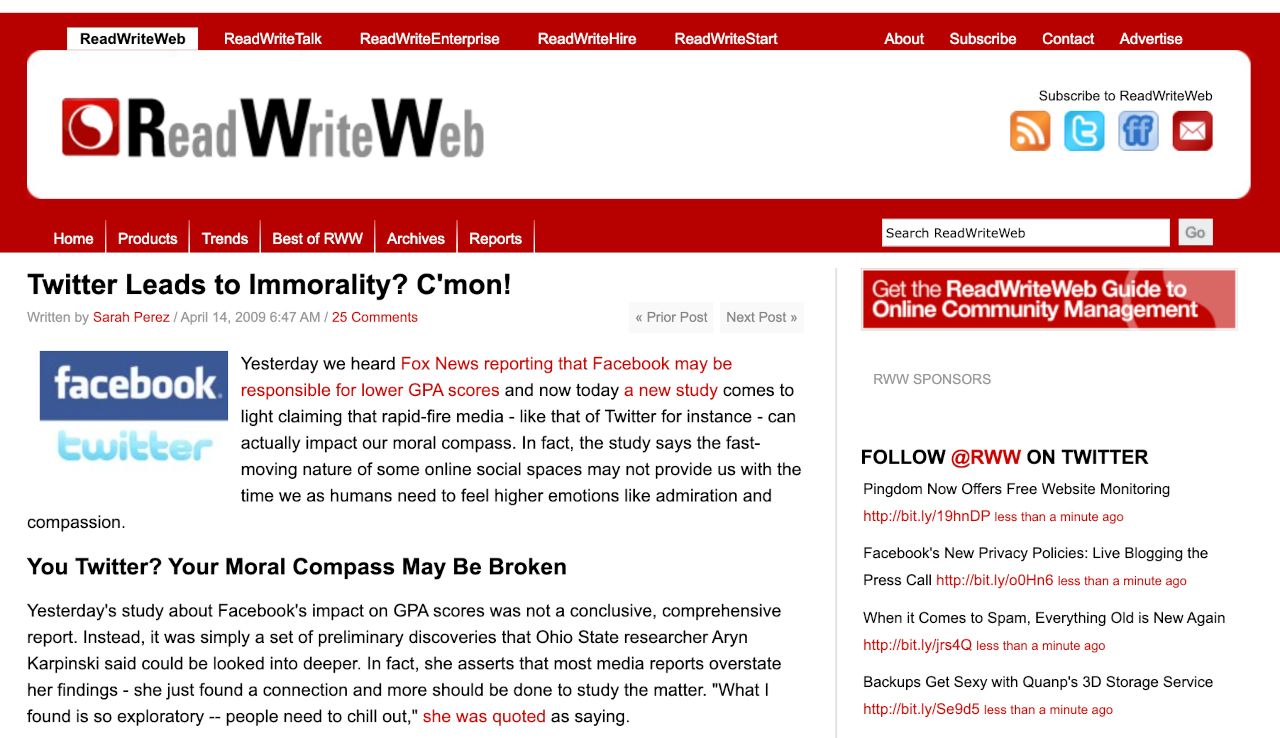
Marshall said he respectfully disagreed with my stance, but that as editor I had the final say. So we didn’t add a disclosure to posts about Twitter. But it illustrated one of the differences in our styles. Marshall was, to his great credit, always very interested in the ethics of the big internet companies—he was one of the first bloggers to highlight Facebook’s privacy issues, for example. Sometimes he was overly enthusiastic about criticizing these companies. His first post about Facebook’s privacy changes in June was a long rant based on a misunderstanding on his part. But I was glad he was passionate about these issues because I was more focused on the broader tech trends and making sure that RWW lived up to its tagline, “What’s next on the Web.”
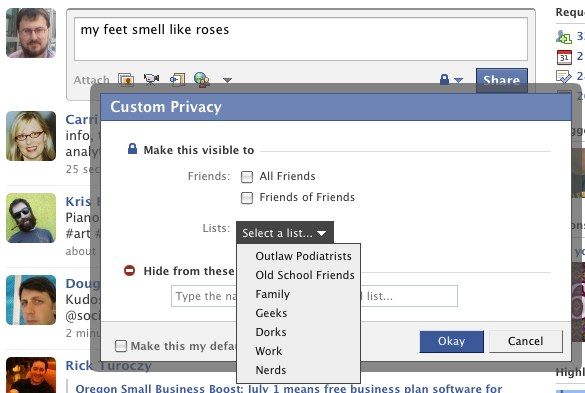
When it came to the business of running a professional blog, I tended to be the pragmatic one and kept a constant eye on what our competitors were doing. To me, it was great news that RWW had finally made it onto Twitter’s SUL. Indeed, it eventually became one of RWW’s key business assets as social media continued its steady takeover of the world.
This post is part of my serialized book, Bubble Blog: From Outsider to Insider in Silicon Valley's Web 2.0 Revolution. View table of contents.
Next up: 039. Meeting My Hero, Tim Berners-Lee, at W3C Headquarters
Buy the Book
My Web 2.0 memoir, Bubble Blog: From Outsider to Insider in Silicon Valley's Web 2.0 Revolution, is now available to purchase:
- Paperback, US$19.99: Amazon; Bookshop.org
- eBook, US$9.99: Amazon Kindle Store; Apple Books; Google Play
Or search for "Bubble Blog MacManus" on your local online bookstore.